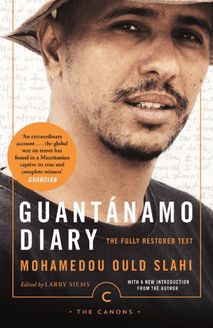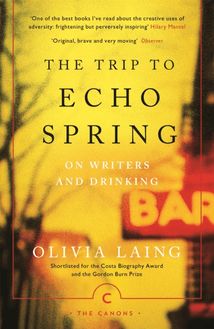-
 Univers
Univers
-
 Ebooks
Ebooks
-
 Livres audio
Livres audio
-
 Presse
Presse
-
 Podcasts
Podcasts
-
 BD
BD
-
 Documents
Documents
-
- Cours
- Révisions
- Ressources pédagogiques
- Sciences de l’éducation
- Manuels scolaires
- Langues
- Travaux de classe
- Annales de BEP
- Etudes supérieures
- Maternelle et primaire
- Fiches de lecture
- Orientation scolaire
- Méthodologie
- Corrigés de devoir
- Annales d’examens et concours
- Annales du bac
- Annales du brevet
- Rapports de stage
La lecture à portée de main
Vous pourrez modifier la taille du texte de cet ouvrage
Découvre YouScribe en t'inscrivant gratuitement
Je m'inscrisDécouvre YouScribe en t'inscrivant gratuitement
Je m'inscrisEn savoir plus
Vous pourrez modifier la taille du texte de cet ouvrage
En savoir plus

Description
Sujets
Informations
| Publié par | Canongate Books |
| Date de parution | 01 juillet 2010 |
| Nombre de lectures | 0 |
| EAN13 | 9781847674722 |
| Langue | English |
| Poids de l'ouvrage | 9 Mo |
Informations légales : prix de location à la page 0,0400€. Cette information est donnée uniquement à titre indicatif conformément à la législation en vigueur.
Extrait
Charles Maclean was born in 1946 and has had a diverse and international writing career. He is the author of a number of award-winning books on Scotch whisky and has also written novels and non-fiction books on the culture and landscape of Scotland. Island on the Edge of the World was Maclean's first book and has become recognised as a classic work of social history.
For Valeri
First published in Great Britain in 1977 by Canongate Books Ltd, 14 High Street, Edinburgh EH1 1TE
First published in Great Britain in 1972 by Tom Stacey Ltd by Canongate Books Ltd, 14 High Street, Edinburgh, EH1 1TE
This digital edition first published in 2009 by Canongate Books Ltd
Copyright © Charles Maclean, 1972 Afterword copyright © Margaret Buchanan, 1996
The moral rights of the authors have been asserted
British Library Cataloguing-in-Publication Data A catalogue record for this book is available on request from the British Library
ISBN 978 1 78689 610 0 eISBN 978 1 84767 472 2
canongate.co.uk
Contents
List of Illustrations
Maps of St Kilda
Introduction
The Island
Early History
Ownership, Rent and Economy
Death, Legends and Beliefs
A Simple Life
An Arcadian in Glasgow
Birds and Cragsmen
Agriculture
Missionaries and Disease
Arcady Despoiled
Evacuation
Culture and Utopianism
Afterword
Bibliography
Index
List of Illustrations
First Section
St Kildans with telescope National Trust for Scotland ; St Kilda from the east Eric and David Hosking ; View of Stac Lee from Boreray; Stac Lee from the east Robert Atkinson, courtesy of the School of Scottish Studies ; Village Bay Eric and David Hosking ; Euphemia MacCrimmon, the poetess School of Scottish Studies ; Married women c . 1980 National Trust for Scotland ; Fowlers relaxing at the cliff’s edge National Trust for Scotland ; Selling souvenirs to tourists Caledonian Newspapers ; Finlay MacQueen, his son and grandson in 1927 National Trust for Scotland ; A St Kilda fowler Niall Rankin, courtesy of Eric and David Hosking ; Finlay MacQueen talking to John Mackenzie National Trust for Scotland ; Spinning, St Kilda; Cill-Chriosed, the graveyard on Hirta National Trust for Scotland ; Rachel MacCrimmon National Trust for Scotland ; Rev. John Mackay School of Scottish Studies ; Bird-fowling on cliffs Eric and David Hosking ; Interior of the church Robert Atkinson, courtesy of the School of Scottish Studies ; Church and manse Caledonian Newspapers ; The St Kilda Parliament National Trust for Scotland ; Woman knitting National Trust for Scotland ; Man with sack of wool National Trust for Scotland .
Second Section
St Kildan schoolchildren George Washington Wilson collection , Aberdeen University Library Ref. C4251 ; Two St Kildan children National Trust for Scotland ; Sending a letter by St Kilda ‘mailboat’ Robert Atkinson, courtesy of the School of Scottish Studies ; Dividing the fulmar catch c . 1890 National Trust for Scotland ; An artist’s impression of fowling in 1891 A. Jobling, National Trust for Scotland ; St Kildan children c . 1910 National Trust for Scotland ; Rachel Anne Gillies National Trust for Scotland ; Neil Ferguson and Donald MacQueen grinding corn in a quern National Trust for Scotland ; A view of cleits; Village Bay National Trust for Scotland ; The Gillies family outside their cottage c . 1890 National Trust for Scotland ; Bales of tweed ready for export Caledonian Newspapers ; St Kilda puffins National Trust for Scotland ; Fulmar Petrel National Trust for Scotland ; Gannet with young ‘guga’ National Trust for Scotland ; Wren National Trust for Scotland ; Soay sheep National Trust for Scotland ; St Kilda field-mouse National Trust for Scotland ; Gannet in flight National Trust for Scotland ; Preparing for evacuation Caledonian Newspapers ; The village main street as it is today National Trust for Scotland .
Introduction
When a simple or primitive society comes into contact with civilization it undergoes cultural change. Unable to resist the seductive advantages of a more developed technology, it also embraces or has forced upon it a new system of values which inevitably leads to the breakdown of the old culture. This process of acculturation can be seen today as instrumental not only in the destruction of large numbers of simple societies in under-developed parts of the world, but also as a cause of social and environmental problems in the increasingly homogeneous wasteland of modern civilization. It is illustrated here in microcosm by the story of the remote Hebridean island of St Kilda.
A part of Britain but a world apart, St Kilda society existed in almost complete isolation from the mainstream of civilization for more than a thousand years. Increased contact with the mainland during the 19th century brought about the slow downfall of what many had once regarded as an ideal society. In 1930 the islanders who could no longer support themselves, were finally evacuated at their own request.
The history of St Kilda exists by virtue of those visitors, who by going to the island helped to give it a history in the first place and by writing about it afterwards recorded what would otherwise have been lost. Since the St Kildans themselves were mostly illiterate until the turn of the century, their story is chiefly told by outsiders, who, however unwittingly, contributed to the destruction of the island society by breaking its isolation. But without them there would have been no story to tell.
The man whose pen first made St Kilda famous was undoubtedly Martin Martin, the gentleman from the Isle of Skye, hired as literary tutor to the MacLeods of Dunvegan. Martin, who travelled extensively among the Western Isles of Scotland and wrote about most of them, visited St Kilda in 1697. His account of the islanders and their way of life in A Late Voyage to St Kilda is a brilliant and individual piece of reportage displaying keen powers of observation and, in spite of Dr Johnson’s assertions to the contrary, a distinct literary gift. Martin’s work provided the later authors of St Kilda with a source of inspiration, unique information about the island and set a high level of achievement. A few of his successors, like the Rev Kenneth Macaulay, a minister from Ardnamurchan and a great uncle to the famous historian, who was sent to St Kilda in 1758 as a missionary, managed to write close to Martin’s standard. Each successive publication about St Kilda (there has been a surprising number) has nonetheless added to the sum total of knowledge on the subject in one way or another and will no doubt continue to do so. In the present book I have drawn information and quoted liberally from many of St Kilda’s authors especially Martin and Macaulay, to whom I am widely indebted.
After the evacuation of St Kilda the owner, Sir Reginald MacLeod, sold the island in 1932 to the Marquis of Bute, who as an eminent ornithologist was particularly interested in preserving it as a bird sanctuary and bequeathed it on his death to the National Trust for Scotland. The island has since been made a nature reserve and is leased by the Trust to the Nature Conservancy, who are making an ecological survey of the wildlife, noting any changes that have occurred since the departure of the islanders. During the summer months the National Trust runs cruises to St Kilda and organizes parties to go out and spend a fortnight or so living in three restored cottages on the island and work at the repair and restoration of the buildings, cottages, cleits, dykes and other remains of St Kildan civilization. Eventually they hope to reclaim the entire village from what would otherwise be certain devastation by wind and weather. In 1957 a small area on Hirta was commandeered by the Ministry of Defence for a missile tracking station. A few years ago £ 500,000 was spent on lengthening the pier in Village Bay and erecting new buildings for a military camp, which surprisingly has been quite well landscaped. It is ironical nonetheless that so much money and effort should have been made available for this purpose forty years after the islanders were evacuated.
Finding the archipelago of St Kilda on the map is not always easy. A map of Scotland which includes the Outer Hebrides, will often leave out St Kilda because it cannot be fitted on to the page and is too small to qualify for an inset of its own. The island group, comprising four islands Hirta, Soay, Boreray and Dun (Hirta, also known as St Kilda, is much the largest) lies out in the Atlantic Ocean on the edge of the continental shelf, about fifty miles due west of Harris and 110 miles west of the nearest land on the mainland. Its isolation is increased by the difficulties of getting there. Until the 19th century the voyage involved several days and nights in an open boat rowed by MacLeod’s men from Skye. Once beyond the relative safety of the Minch they were at the mercy of the open Atlantic. If the weather turned bad retreat if possible to the shelter of the Outer Hebrides was the only hope. Even today a boat setting out for St Kilda is by no means assured of reaching its destination.
The islands are almost entirely cliff-girt and surrounded by deep water. The only point where it is possible to make a safe landing or lie at anchor is in Village Bay. When a strong wind blows from the south-east straight into the bay this one place of refuge becomes untenable. A large boat can usually lie off and ride out a storm but an ordinary fishing vessel may be forced to return to North Uist or Harris and wait for the wind to change or die down before making another attempt. Until the turn of the century when conditions were right for anchoring in the bay a landing could only be made in a small dinghy since it was impossible to bring a larger boat into the rocks. Although a concrete pier was built in 1902 and has been enlarged and improve
-
 Univers
Univers
-
 Ebooks
Ebooks
-
 Livres audio
Livres audio
-
 Presse
Presse
-
 Podcasts
Podcasts
-
 BD
BD
-
 Documents
Documents
-
Jeunesse
-
Littérature
-
Ressources professionnelles
-
Santé et bien-être
-
Savoirs
-
Education
-
Loisirs et hobbies
-
Art, musique et cinéma
-
Actualité et débat de société
-
Jeunesse
-
Littérature
-
Ressources professionnelles
-
Santé et bien-être
-
Savoirs
-
Education
-
Loisirs et hobbies
-
Art, musique et cinéma
-
Actualité et débat de société
-
Actualités
-
Lifestyle
-
Presse jeunesse
-
Presse professionnelle
-
Pratique
-
Presse sportive
-
Presse internationale
-
Culture & Médias
-
Action et Aventures
-
Science-fiction et Fantasy
-
Société
-
Jeunesse
-
Littérature
-
Ressources professionnelles
-
Santé et bien-être
-
Savoirs
-
Education
-
Loisirs et hobbies
-
Art, musique et cinéma
-
Actualité et débat de société
- Cours
- Révisions
- Ressources pédagogiques
- Sciences de l’éducation
- Manuels scolaires
- Langues
- Travaux de classe
- Annales de BEP
- Etudes supérieures
- Maternelle et primaire
- Fiches de lecture
- Orientation scolaire
- Méthodologie
- Corrigés de devoir
- Annales d’examens et concours
- Annales du bac
- Annales du brevet
- Rapports de stage




















